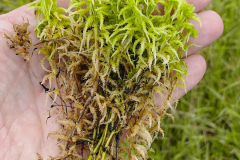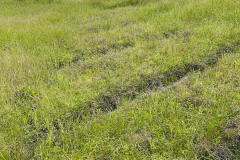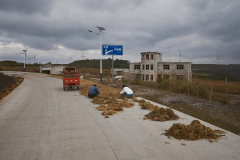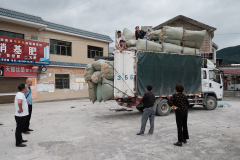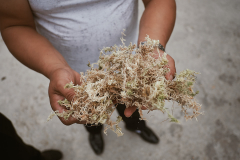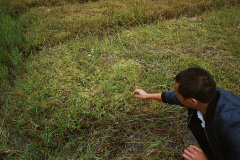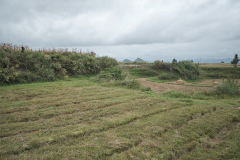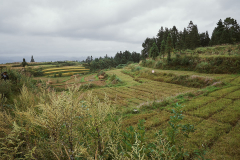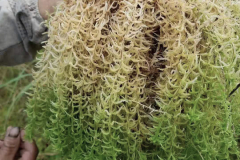I had the unique opportunity to visit Sphagnum moss farming sites in Guizhou, China, and to learn about Sphagnum farming on mineral soils in China. Sphagnum sp. moss, of which there are globally about 300 species, are normally associated with peatlands, as Sphagnum sp. are the principal peat forming organisms. In Europe & Canada, Sphagnum moss farming, the production of Sphagnum biomass on rewetted bogs, is still in an experimental stage. This process, called paludiculture, supports achievement of global climate goals by decreasing greenhouse gas emissions from drained peat and may replace peat with a renewable biomass alternative. Sphagnum moss farming on mineral soils is therefore not paludiculture yet may be of increasing importance in replacing peat as constituent of growing media, for growing food and ornamentals.
Sphagnum species in China grow faster than Nordic species on average and are harvested annually. As a comparison, farmed Sphagnum in Germany or Canada are harvested only every 5-7 years. Sphagnum species grown in Guizhou, however, are different from the main species at more northern latitudes, and therefore the range of potential applications between the species likely differ as well. Chinese Sphagnum is mostly used for growing seedlings of orchids and some food plants, such as shrub blueberry. Nordic Sphagnum species have a wider range of known applications.
RDI work is needed to a) investigate other potential applications of currently farmed species and b) to investigate the suitability to grow other Sphagnum species in Guizhou environmental conditions. With global, and especially Chinese demand for growing media increasing rapidly, Chinese Sphagnum farming may gain significant importance in the future.
Sphagnum farming boosts rural development in Guizhou – in a sustainable manner
Guizhou is among Chinas poorest provinces. Intensive rice production, which used to be the main source of income for Guizhou farmers, has largely shifted to other provinces. As a result, farmers continue to produce rice merely for own consumption and lifestyle, with low revenue. Since the beginning of the 2000’s, Sphagnum farming is slowly replacing rice production, and in average produces revenues to farmers about 8-fold as compared to rice production revenues. Current harvest yields are in 1000s of tons (dry material). The potential to increase farming area and harvesting yield of Sphagnum in Guizhou is very significant, upscaling obstacles are merely farmer attitudes, and the jungle of Chinese bureaucracy.
Sphagnum farming in Guizhou is sustainable, pesticide free and essentially organic, and is an excellent example of rural development in poor areas, by innovating new ways of sustainable agricultural production, and hence new ways of revenues, and combines efficiently the dimensions of environment, economy and society. By doing so, it already achieves a number of the UN Sustainable Development Goals.
I am deeply grateful to Mr. Zhu Longjin, a pioneer of Guizhou Sphagnum farming (since 1986!), for all the knowledge he shared with me, and especially for his very kind hospitality.
Dr. Gilbert Ludwig
Secretary General, International Peatland Society


